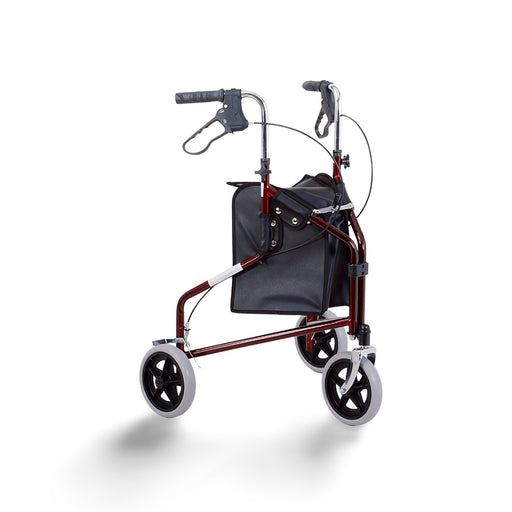When you first start looking at walkers, it’s easy to think there’ll be one perfect model that does everything — folds easily, fits through tight doorways, glides smoothly outdoors, has a comfy seat, and is light to lift. But the reality is, walkers are each designed with a different purpose in mind, and no single model will suit every situation.
Some walkers are great for indoor use — compact and easy to steer — but may feel less steady outside. Others are built for outdoor freedom, with larger wheels and a seat for resting, but may be harder to store or transport.
1. Where Will It Be Used?
Mainly Indoors
A narrow-frame walker with small wheels is ideal for use inside the home. These models take up less space and are easy to steer around furniture and through tight hallways. Many also offer the option to add a clip-on tray, making it much easier to carry meals, drinks, or essentials from room to room.
Tri-wheeled walkers are another excellent choice — lightweight, easy to turn, and perfect for navigating narrow doorways or tighter spaces.
✅ Narrow Frame and Tri Walkers
Great for: smaller homes, retirement units, or use around the kitchen and lounge.
✅ Clip-On Tray
Very useful for indoor use — ideal for carrying cups of tea, meals, and everyday items without needing a separate trolley.
Indoors and Outdoors
A standard 4-wheel rollator is a great all-round option for both indoor and outdoor use. These walkers offer the right balance of support and flexibility.
Look for models with handbrakes for added control, larger wheels for smoother rolling outdoors, a padded seat so you can rest when needed, a storage bag for carrying essentials, and a cane holder to keep your walking stick secure and close at hand. X-folding models are much easier to transport, as they fold up smaller and take up less space in the car or at home.
✅ All-Round Rollators
Great for: lifestyle villages, local cafés, supermarket runs, or attending appointments — indoors or out.
✅ X-Folding Frames
Make a huge difference for lifting into car boots and general transport — lighter, slimmer, and easier to manage.
Outdoor Terrain Use
If you’ll be walking on gravel, grass, or uneven surfaces, choose a rollator with extra-large wheels, strong brakes, and a sturdy frame. These features give you better control and stability over rougher ground.
Helpful extras like curb climbers make it easier to get over edges, and a cane holder means you can carry your walking stick hands-free.
✅ Off-Road Walkers
Great for: gardens, beach paths, lifestyle blocks, or unsealed rural driveways.
✅ Pneumatic Tyres
Larger air-filled wheels can handle rougher terrain more comfortably — ideal for outdoor freedom and flexibility.
2. Do You Need a Seat?
If you get tired easily or enjoy longer outings, a walker with a built-in seat gives you the freedom to pause and rest wherever you are — without needing to search for a bench or chair.
This is especially helpful for:
- Supermarket trips
- Morning walks
- Waiting in queues
- Visiting local markets or events
✅ Padded Seat and Backrest
Look for a comfortable seat and supportive backrest, and make sure your feet can rest flat on the ground when seated for proper posture and ease of use.
3. Will It Fit Your Height?
The correct handle height is important for good posture, balance, and comfort. Most walkers are height adjustable, and adjustments can be made at home without tools.
A well-fitted walker reduces fatigue, prevents strain, and encourages safer, more confident walking.
✅ When your hands are on the handles, your elbows should have a slight bend. Measure from the floor to the crease of your wrist for a good starting height.
4. Will It Fit in the Car?
Many Kiwis tell us their biggest frustration is getting their walker in and out of the car. It’s common to have a great walker at home, but struggle with transport.
If you’re lifting your walker in and out of a car boot, a lightweight model — ideally under 7kg — makes a big difference.
Some customers choose to keep one walker at home and another in the boot, so they’re always ready. This setup can be a game-changer for maintaining independence and getting out confidently.
✅ If transport is difficult now, it’s worth upgrading to a model that suits your mobility and your car.
















